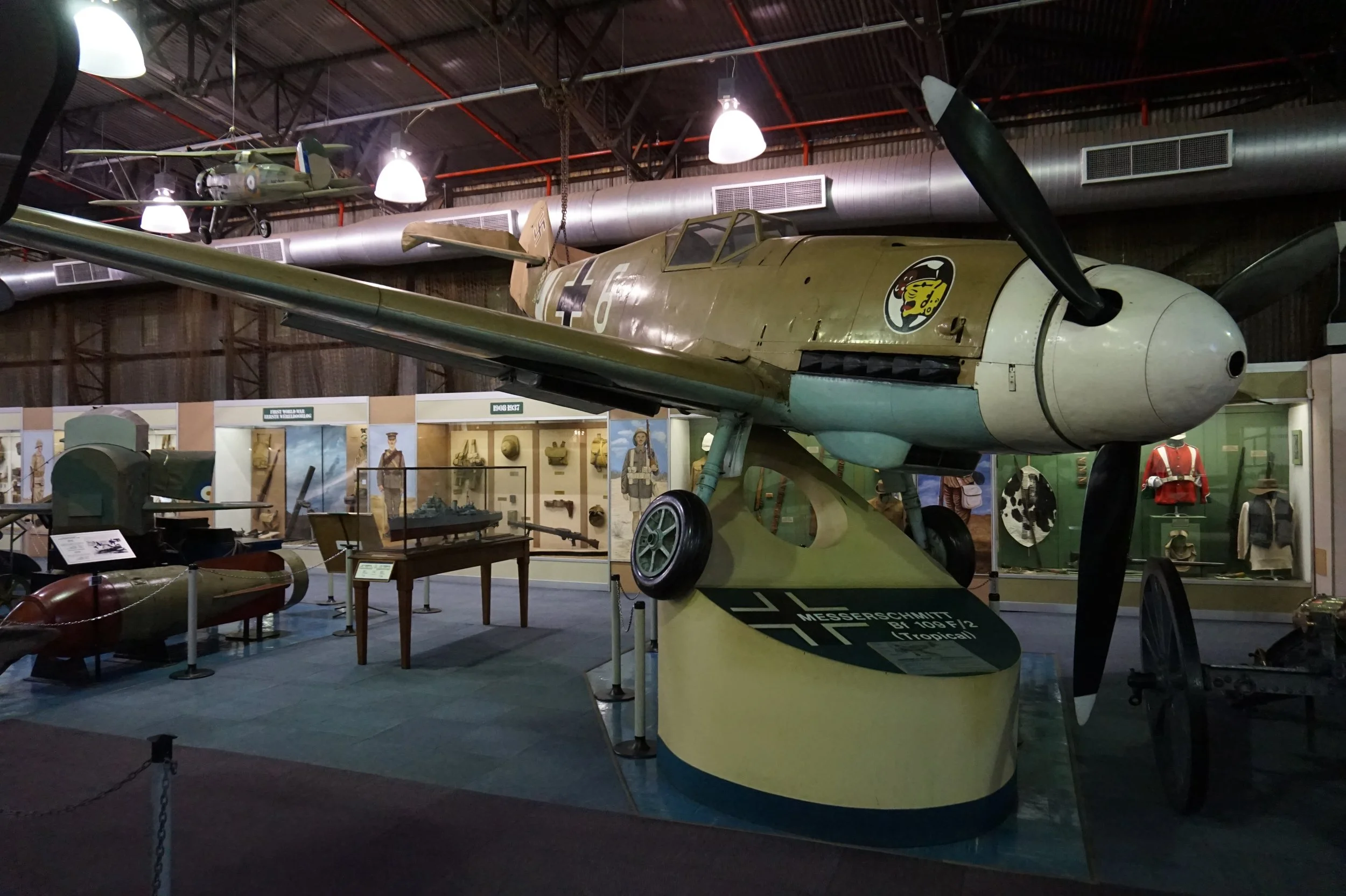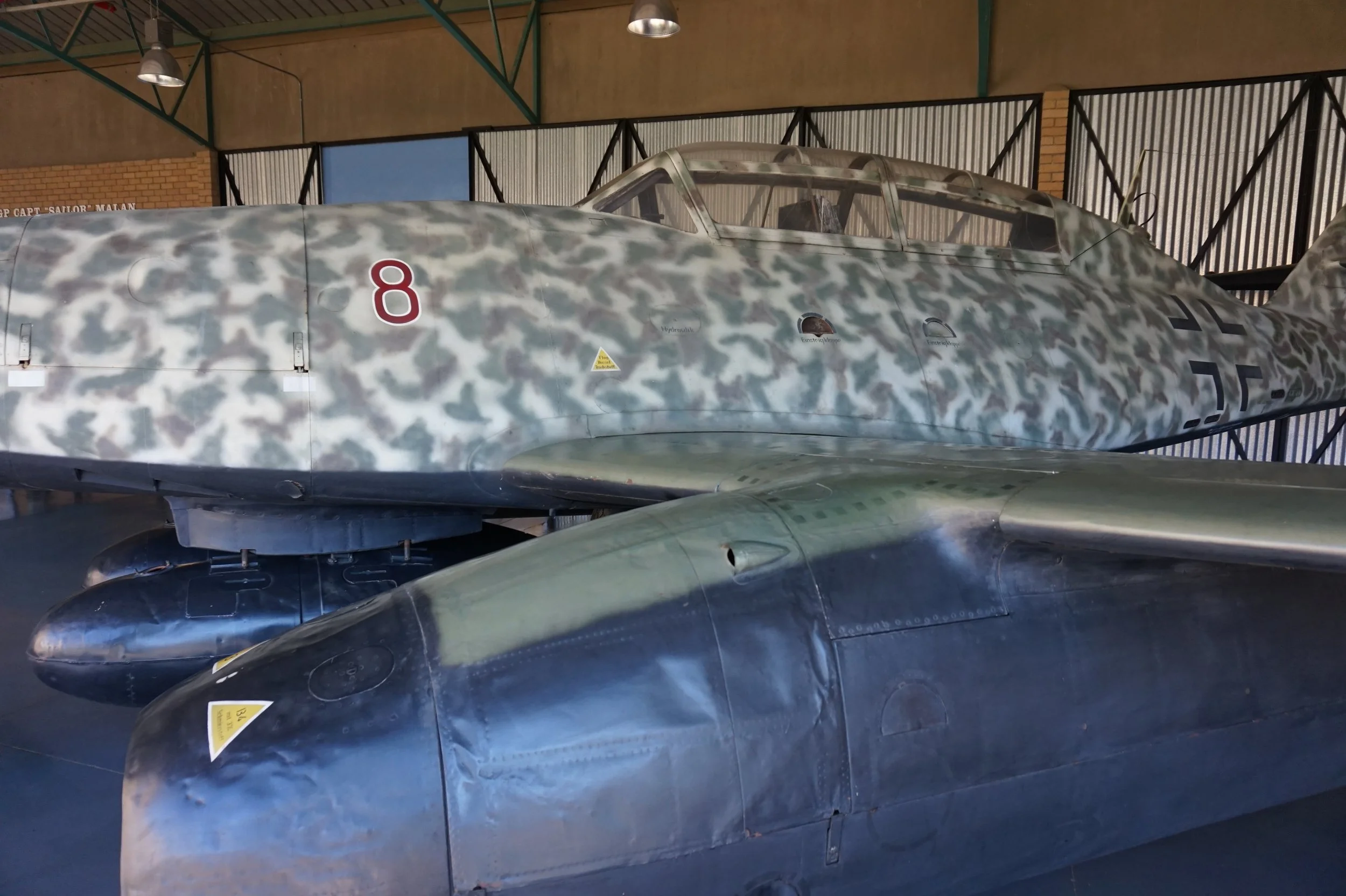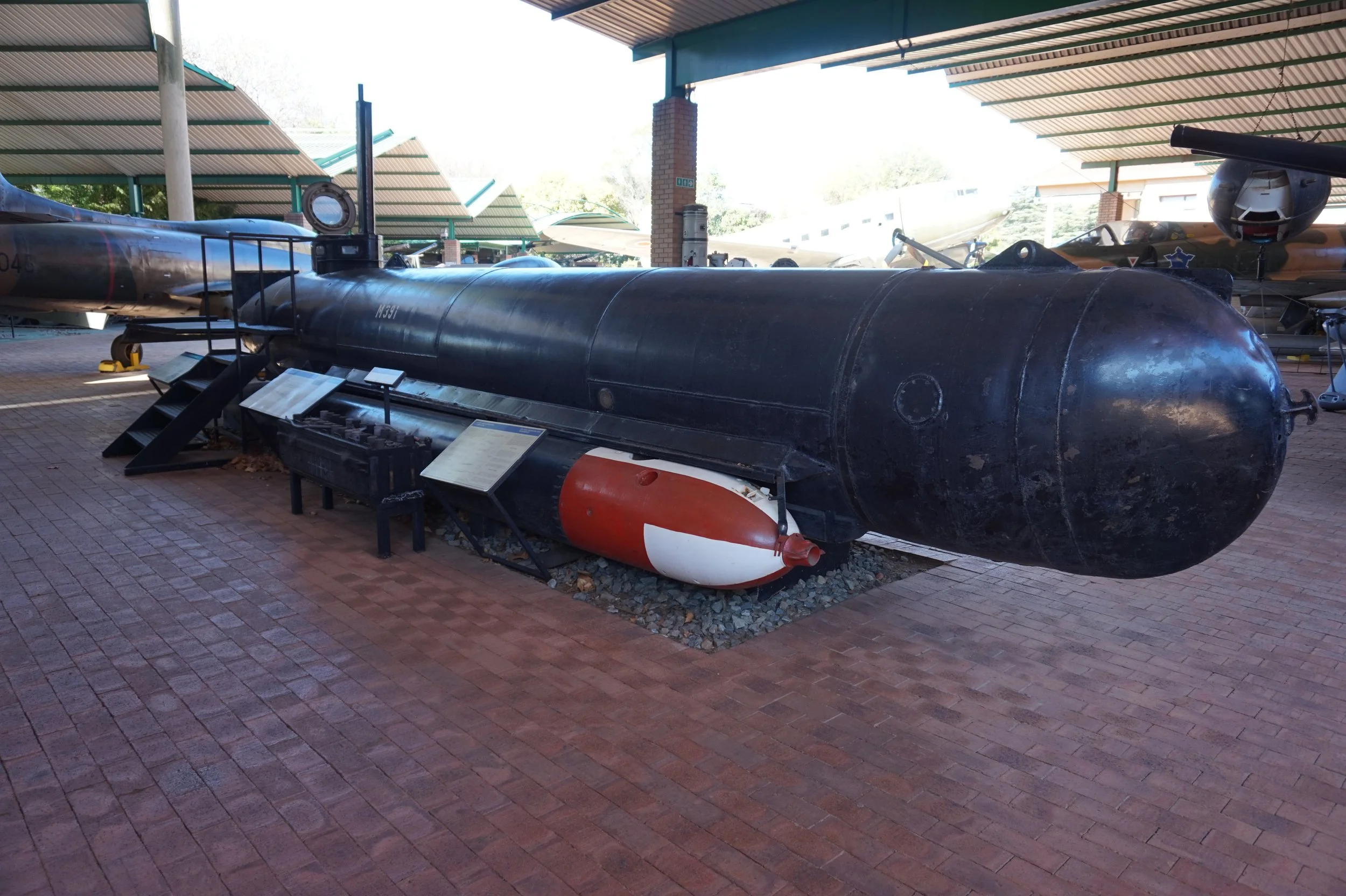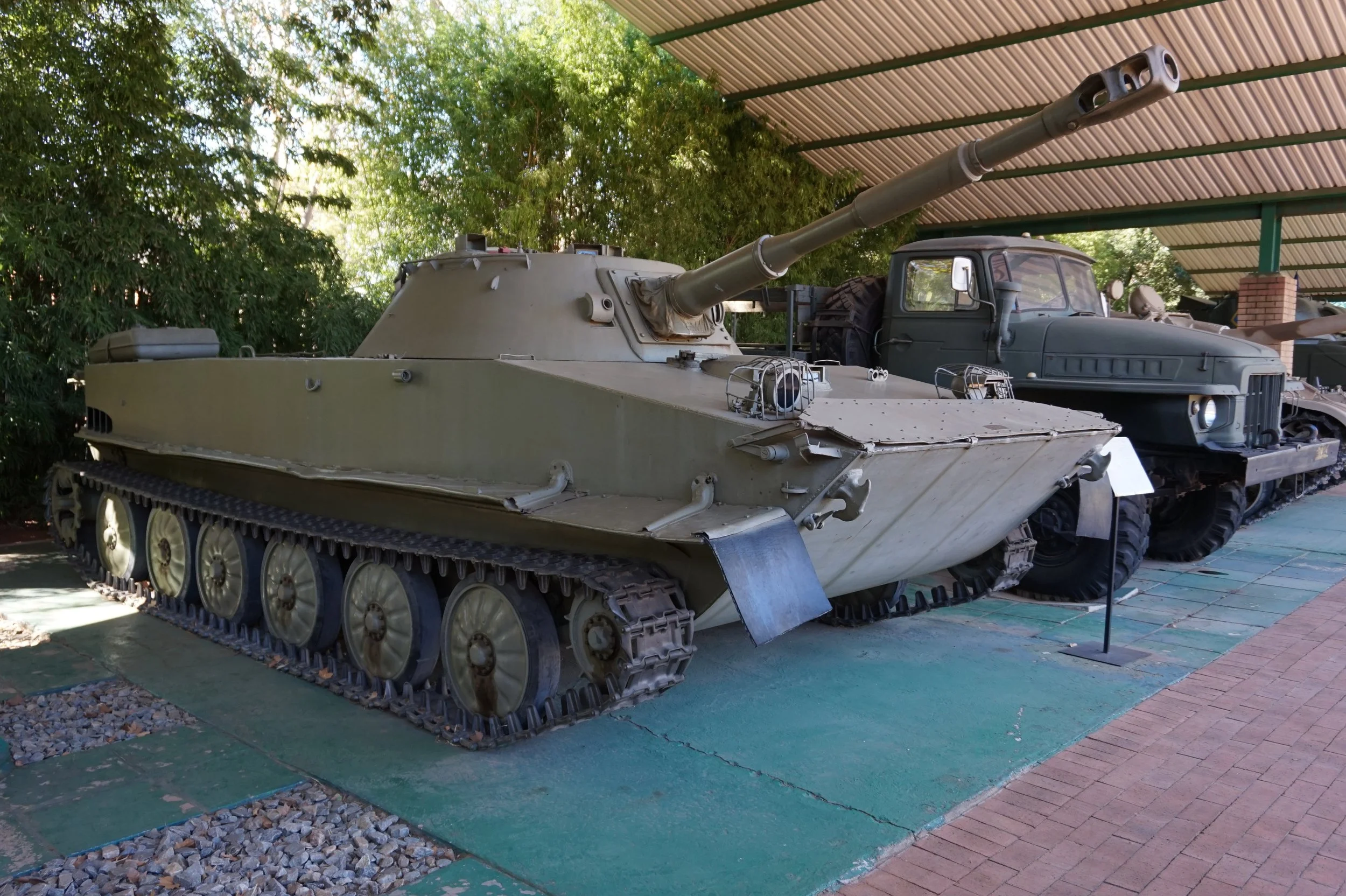South Africa. Weapons of South Africa’s Military Conflicts
My companion and I were looking for activities during an extra day in Johannesburg, South Africa. We both enjoy military history, so we made arrangements for a cab ride to see the South African National Museum of Military History. Located in the heart of the city, the museum opened in 1947 with the goal of interpreting South Africa’s contributions during World War II. In 1975, the museum’s mission expanded to include all the country’s military conflicts. South Africans participated in several major battles against Axis forces during World War II and South African military pilots flew hundreds of combat missions against German and Italian forces. A total of 6,840 South Africans died fighting during the conflict. The museum’s aircraft includes a British Hawker Hurricane, a Supermarine Spitfire, and a Royal Aircraft Factory SE5. The museum’s SE5 biplane was acquired in 1920 as part of a gift of 22 aircraft from the United Kingdom that was intended to help the country develop its own air force. The museum’s SE5 is the only surviving aircraft from that gift.
Among the most impressive aircraft displays was a single engine German Messerschmitt Bf-109, the most produced (34,248) fighter aircraft in history. First appearing in 1936, the “Messer” (the German word for “knife”) had a top speed of 530 kilometers per hour. Fitted with machine guns, later versions were equipped with a 20mm cannon that fired through the propeller shaft. Originally intended to serve as a fighter, the Bf-109 was also used as an all-weather attack aircraft, bomber escort, and reconnaissance plane. The museum’s aircraft was captured in the western desert of North Africa and transported to South Africa as a war prize.
Nearby was a rare Messerschmitt 262 Schwalbe (swallow in German). The Me 262 was the first operational jet-powered aircraft and was used as a fighter and a fighter-bomber. Faster (869 km/hour) and more heavily armed that piston aircraft operated by the Allies, the twin engine 262 had an endurance of only 60 to 90 minutes because of its high fuel consumption. The aircraft was a moderate success with German 262 pilots claiming to have shot down 542 aircraft. Of 150 Me 262s built during WWII, only 15 survive. The museum’s 262 is a rare two-seat B-1a version that was built as a trainer and later converted into a night fighter by adding a FUG218 radar. “Red 8” was surrendered to the Allies at Schlewig in northern Germany. Soon after, Allied pilots flew the aircraft to evaluate its capabilities.
Another outdoor display was a WWII-era Molch (aka salamander), a one-man German submarine that could launch two externally mounted torpedoes. With a range of 64 kilometers, the Molch had a top speed of 9.3 kilometers per hour and was powered by an electric motor driven by a battery located in the bow. The Germans built a total of 393 Molch submarines. Used in the Mediterranean, they were mostly ineffective against the Allies. In one attack on Allied ships in September 1944, twelve Molch submarines were destroyed.
Inside the museum was a display featuring bright red tunics worn by British soldiers during the Zulu War (1879). The colorful uniforms and white helmets were intended to build a sense of unity and boost morale. However, their color made soldiers easy targets. In subsequent conflicts the British adopted khaki uniforms that were more difficult to spot. The museum also featured items from the Boer War (1899-1902). The name “boer” means “farmer” in Dutch. Boers were descendants of Dutch settlers who lived in the Cape Colony. In an effort to escape British influence, many Boers migrated north. The Boer War was fought between the British and the two Boer Republics, the South African Republic and Orange Free State. The Boers lost the conflict. One Boer War display is a German 37mm Pom-Pom gun, also called the Maxim-Nordenfelt machine gun.
Stored within a covered patio was a row of trucks and other vehicles including a Soviet PT-76 amphibious tank. Fitted with a 76mm rifled gun, the PT-76 was the standard Soviet reconnaissance tank. The museum’s PT-76 was brought to Angola by Cuban forces and later captured. Other heavy equipment on display included a M4 Sherman tank, a M3 Stuart Tank, and several artillery pieces. We browsed other displays including a cabinet featuring a Victoria Cross (VC), the country’s highest award for bravery. The museum’s VC was awarded posthumously to Captain Edwin Swales, a South African who was killed during a bombing raid over Pforzheim, Germany in 1944. Another display featured flintlock rifles used between the 17th and 19th centuries. Other small arms included an AK-47, M1 Garland, Thompson machine gun, and a rare German Fallschirmjägergewehr 42 automatic rifle. An identical rifle was used by German airborne troops in 1943 during a raid to rescue the deposed Italian dictator, Benito Mussolini.






